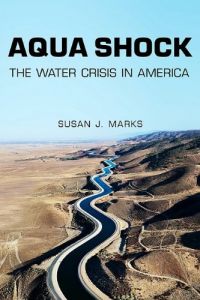Join getAbstract to access the summary!

Join getAbstract to access the summary!
Susan J. Marks
Aqua Shock
The Water Crisis in America
Bloomberg Press, 2009
What's inside?
Water is precious. Stop wasting it, and learn how to conserve it.
Recommendation
While water may seem to be a simple substance, the United States and the rest of the world face a dangerous water crisis due to a complex culmination of events. Journalist Susan J. Marks uses a deft writing style that glides from anecdotal reports to studies of the scientific and environmental dimensions of water scarcity, as well as the implications for national security. Unfortunately, in some places, a staccato of bullet-point factoids prevent the story from developing powerful momentum. getAbstract recommends this detailed presentation of water problems and possible solutions to readers who seek a thorough factual introduction to this vital subject.
Summary
About the Author
Susan J. Marks, a former Denver Post reporter, is an award-winning journalist with more than 30 years experience. She has written or collaborated on more than a dozen books on consumer issues. Her work has appeared in such publications as BusinessWeek, the Los Angeles Times, Forbes and Woman’s World.
















Comment on this summary